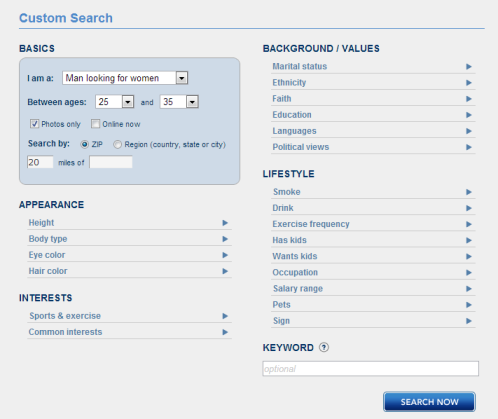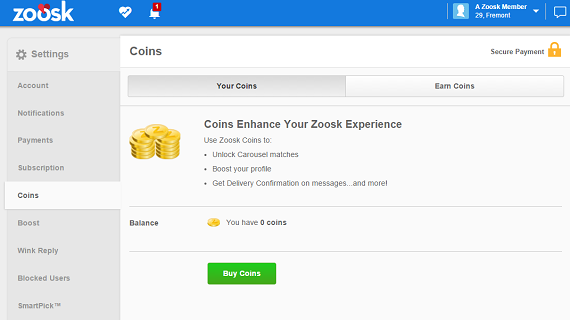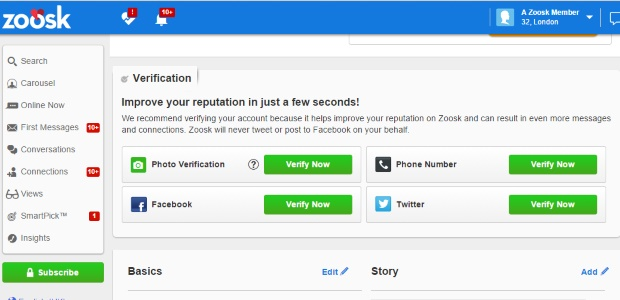“There are bad sides to everything but I think, for the most part, online dating is one of those things that is really solving one of society's problems.“ Gary Kremen, co-founder of Match.com.
Don’t you agree?!
As online dating becomes more and more socially acceptable, people are becoming much more comfortable getting acquainted via websites than in the past. Factors like overwhelming digitalization, social distancing during the pandemic, and the increasing prevalence of virtual communication gave a powerful boost to the online dating industry.
According to Statista, the online dating industry is expected to be valued at $4,2 billion by 2024.
Today, the market is made up of more than 1,500 different dating apps and their number is growing. Let’s find out how to make a dating website.
Dating Websites Competitive Landscape
Today, one-third of all online dating services is covered by four large companies:
- Match Group (Tinder, Match, Meetic, OkCupid, Hinge, PlentyOfFish, and 39 other websites)
- Bumble (Badoo, Bumble, Chappy, Lumen)
- Dating Group (Dating, DateMyAge, Promise, ChinaLove)
- Spark Networks SE (Zoosk, SilverSingles, EliteSingles, Jdate, Christian Mingle, eDarling)
Each of these services has its own way of providing value to users, for example:
- Serious dating and matchmaking websites offer sophisticated search and recommendation mechanisms to help daters find the right partner and build healthy relationships that will lead to marriage
- Casual dating websites, or open relationship dating apps, whose audience is composed partly of married users, offer special features that allow discretion (e.g. blurred pictures)
- Specialized dating websites concentrate on particular groups of people who have common lifestyles (e.g. vegans, freelancers), professions, sexual orientation, relationship types (e.g. open marriage dating sites), religion, income level, body type, or even disability.
So how do you build an online dating website in one of these niches? And how much it will cost?
These are the questions we cover in this article.
We go over the core ‘must have’ features to start a dating website, as well as show some examples of trendy features that can give you a competitive edge. We will also give you rough estimates of how much time and money it will require.
The goal of this article is to give you an idea of the workload for building a dating website and help you prepare your Project Specifications.
Core Features
One of the best ways to start your dating website is by first building an MVP with the most critical features and then upgrading it based on the customer feedback. We take a modular approach to web development, which allows us to easily add new features after the website’s launch.
Here are features your dating website will most likely require:
- Registration and profile creation
- Communication
- Searching and matching
- Monetization
- Security
- Admin functionality
- Responsive design.
Continue to see what goes into each.
1. Registration and Profile Creation

Unless you’re going for anonymity, the first thing you will ask a user to do on your website is to register and create a profile.
Profiles play a central role in most dating websites. The user’s profile serves as the basis by which the algorithm determines attractiveness and compatibility. Many online dating platforms generate match recommendations based on profile information.
Therefore, profiles have to be quite informative, which can mean a lot of work for your users. One way to solve this problem is with social login. So your users will be able to sign in with one of their social accounts. In such a way your website will automatically import some of the profile information, saving time for your users. As a bonus, social sign-ups will also help you verify users to ensure that they are real people.
Here are typical profile related features:
- User profile
- Email address, location, a partner they are looking for, birthday
- Username, height, previous marriage, children, ethnicity, education, religion, smoking and drinking habits, body type
- Social login with accounts on other social networks (Facebook, Twitter, Instagram, etc.)
- Import all Personal Information, so that users don’t have to re-enter their information (username, email, age, interests, etc.). Check what PI data you can get from different social networks.
- Authenticate and authorize users.
- Essays
- Compatibility
- Answer multiple choice questions like “How often do you exercise?” and “Do you enjoy traveling for fun?”The more you answer, the better the site can gauge compatibility
- The software can calculate the best matches by date of birth using astrology or numerology.
As mentioned earlier, in certain niches of online dating the approach does not require personal data. Many ‘hookup’ sites, in particular, value anonymity over meticulous matching. Pure.dating is a good example of an anonymous dating service that requires only a picture and no other personal data to become a user.
2. Searching and Matching

As the sole purpose of an online dating website is to help daters find each other, your website should be doing that in the most efficient way. Some industry leaders, like Zoosk, put a lot of emphasis on the function of searching and matching, calling on complicated algorithms and machine learning (more on that below).
A good place to start is to set up a comprehensive filter. You can come up with a list of filters most relevant to your audience and in such a way help daters narrow their options.
As for the matching, you can also generate ‘people you might like’ lists based on personality test answers.
- Search by filters:
- Age range
- Distance from user’s location (e.g. 3- 100-mile radius)
- Other filters may include height, religion, relationships, children, ethnicity, education, smoking and drinking habits, body type, or income
- Can save popular searches for easy access later.
- Recommendations, based on personality tests
- AI-driven matching
For example, Zoosk uses a "proprietary Behavioral Matchmaking engine" that learns from users' clicks, messaging, and other actions to help produce more accurate matches.

This advanced matching allows Zoosk to :
- Show you automated matches that are based on Zoosk behavior-based matching technology
- Find matches based on your searching patterns (Who You Like) and matches based on other members searching patterns (Who Likes You)
- Learn and enhance your matches based on further searches.
3. Communication

Another 'must-have’ feature for most online dating websites and apps is easy communication..
- Instant Messaging
- Expressing interest (e.g. sending winks)
- Sending digital gifts
- Adding members to the friend list
- ‘Face-to-face’ video chatting
An extremely popular communication feature is ‘swiping.’ Initially implemented by Tinder, it became addictive for users, creating a tactile experience. The feature quickly transitioned from ‘trendy’ to ‘must-have’ for dating apps, as well as apps in other areas.
4. Monetization Mechanics

When starting a dating site, you should think of a monetization model. Here are some ideas to consider:
- Paid membership
- Freemium accounts, where members can use your service for free but have to pay for certain premium features, for example:
- Pay to appear at the top of search results
- Pay to see who had viewed your profile (Tinder)
- Pay to search for people from any location (Tinder)
- Pay to see an unlimited number of profiles each day
- Paying to send digital gifts/superlikes.
- Paid Advertisements.
5. Security
 Security is one of the biggest challenges of online dating. This is what David Kremin meant by ‘bad sides to everything’ in the opening quote to this article. That’s why you should consider how to secure your users against fraud and theft. Here are some of the basic safety features you could adopt:
Security is one of the biggest challenges of online dating. This is what David Kremin meant by ‘bad sides to everything’ in the opening quote to this article. That’s why you should consider how to secure your users against fraud and theft. Here are some of the basic safety features you could adopt:
- Verification with social network accounts and phone numbers
- Creating a block / ignore list which prevents people from flirting with you
- Verification with selfie photo or video
- Reporting fake profiles.
6. Admin Features

You will need to be able to manage your website. The basics will include:
- Managing members profile
- Reporting and analytics.
7. Mobile
The mobile audience is very important if you want to make an app like Tinder. However, depending on your business idea, in the MVP phase, you might create a responsive website that will look good on all devices.
How much does it cost to create a dating website?
The core functionality described above can be created with a white-label solution that can be customized to your business needs. In this case, the development time will be approximately 6-8 weeks and the cost of the website can amount to $15,000 - $25,000.
If you are aiming to create a website with unique features and user flow it will be best to build it from scratch. A custom-build dating website will cost from $35,000 - $57,000.
If you hire us, in both cases our web development agency will provide you with a full range of services including web design, system architecture creation, project management, front- and back-end development, as well as quality assurance.
How to Apply This to Your Business
Let’s sum up. To create a dating website, we suggest starting with core features like registration and profile creation, communication, searching, monetization, security, and admin functionality, as well as responsive design.
Once you have the basics, you can start upgrading and improving the user experience. You can add a whole range of features from a mobile presence to machine learning technologies.
This article should have answered most of your questions on how to start a dating website!
Don’t hesitate to ask for more information. Send us a message and set up a free online consultation about creating a dating website.
Get a cost estimate for your dating website.
Contact UsRate this article!
Not rated
 PHP Development
PHP Development Laravel
Laravel Yii
Yii





Comments (0)